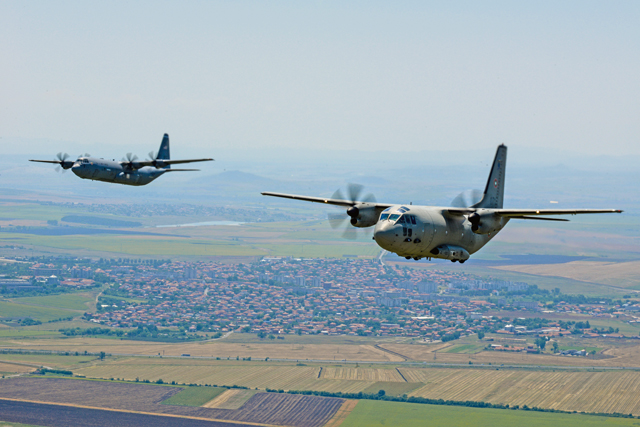
PLOVDIV, Bulgaria — Airmen from Ramstein went wheels-up for a bilateral training exercise with the Bulgarian air force July 14 through 24.
More than 100 Ramstein Airmen deployed with three 86th Airlift Wing C-130J Super Hercules aircraft from the 37th Airlift Squadron to Plovdiv, Bulgaria. The deployment allowed NATO allies to train together while maintaining joint readiness and building interoperability capabilities.
“This is the sixth year we have participated in this exercise,” said Bulgarian air force Col. Petar Tsolov, 87th Division air force headquarters tactical branch commander. “The training we do together is very useful and beneficial to everyone involved. I can recall a few years ago, there was mistrust between pilots so missions were flown separately. We, as a smaller air force, have a lot to learn and the U.S. is one of the best to learn from.”
Airmen and Soldiers from more than 50 career fields came together to carry out the mission, which not only strengthened NATO partnerships, but highlighted a shared commitment to ensure global deterrence of common threats.
The deployment involved low-level training flights, unimproved surface landing zone training on grass, airdrop training and nighttime flying.
According to Capt. Derek Patrick, 37th AS pilot and exercise mission commander, this annual training is crucial to building friendships, all while keeping up with the needs of Air Force training requirements.
“It’s great to be able to practice nighttime flying, low-level formations and unimproved surface landing training out here,” Patrick said. “These components are critical because they allow us to operate anywhere that (United States Air Forces in Europe) tasks us to be at a moment’s notice.”
Ensuring regional security and air operational readiness is a task that cannot be accomplished alone, said Lt. Col. Ryan Barney, 435th Contingency Response Group commander.
“Our Bulgarian partners are not just our allies, they are also our friends,” Barney said. “The days are in the past when the U.S. could succeed alone; we can’t do it by ourselves now, nor do we want to.”
This annual exercise will continue to strengthen current bonds between the U.S. and its allies and aid in securing the future of NATO.


